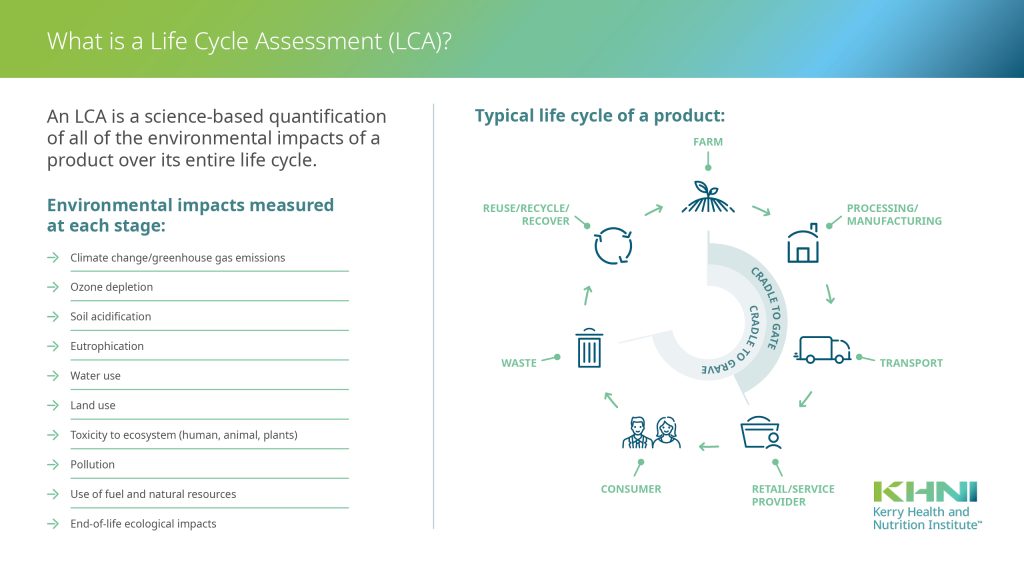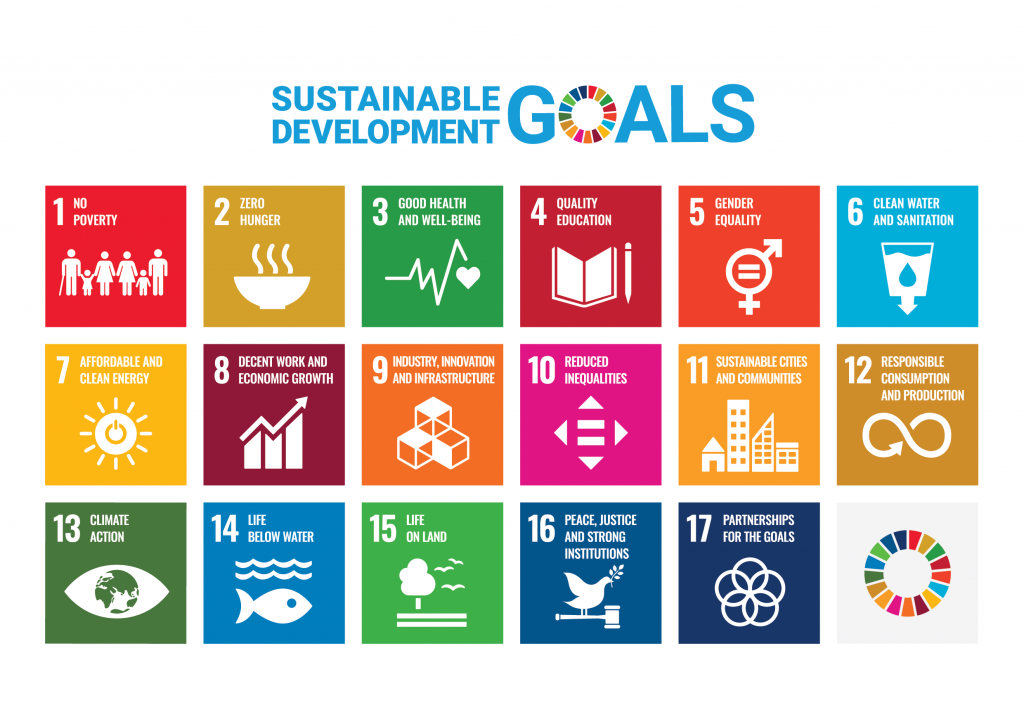Sustainable Nutrition

What is sustainable nutrition?
Sustainable Nutrition is defined as the ability of food systems to provide sufficient energy and essential nutrients to maintain good health of the population without compromising the ability of future generations to meet their nutritional needs (A Path from Sustainable Nutrition to Nutritional Sustainability of Complex Food Systems). It is nutrition that is produced and delivered in a way that is mindful for people, the planet, and society.
Food is also at the heart of one of the biggest challenges of our time – how do we feed a growing population whilst managing the accelerated environmental degradation of our planet?
We urgently need to find solutions. It is important that everyone in the world has a right to eat balanced, healthy and nutritious food. At the same time, we need to make food consumption and production choices that reconcile the limited natural resources we have on our planet to feed everyone. We need sustainable nutrition.
‘It’s estimated that the world’s population will be 9.6 billion by 2050 and that we would need the equivalent of 3 planet Earths to produce enough food to feed that amount of people if we do not change our food production practices (United Nations World Population Report 2019).
Around 30% of the food we produce globally every day is wasted (FAO 2019), yet there is still much of the world that is undernourished.’
A sustainable diet is one that is healthy, safe, and nutritious, has a low or positive impact on the environment, and is also accessible, affordable, and culturally acceptable.
The Sustainable Development Goals align us with sustainable nutrition through goals and target setting.
The aims of Sustainable Healthy Diet are to:
-
-
- achieve optimal growth and development of all individuals of all ages, for present and future generations;
- contribute to preventing all forms of malnutrition,
- reduce the risk of diet-related diseases; and
- support the preservation of biodiversity and planetary health.
-
On this page:
-
-
- Dimensions of sustainable nutrition
- How can sustainable nutrition be achieved?
- What are examples of a sustainable diet?
-
Dimensions of sustainable nutrition
Sustainable healthy diets must combine all the dimensions of sustainability to avoid unintended consequences to our health, planet or our societies.
All the dimensions of a Sustainable Diet therefore can be achieved by either producing sustainable and healthy food or consuming it – ideally both. This diagram shows how Kerry defines the dimensions of Sustainable Nutrition.
To ensure the health of people, the planet, and society, it is important to think additively about these four factors.
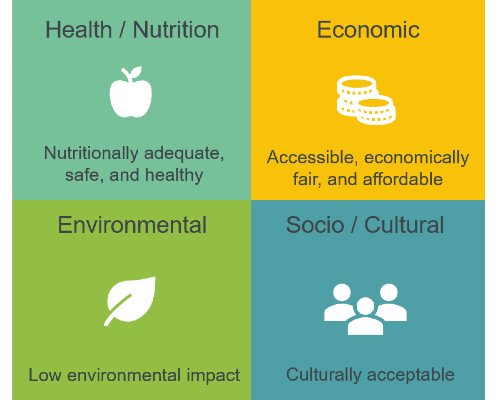
Health & nutrition
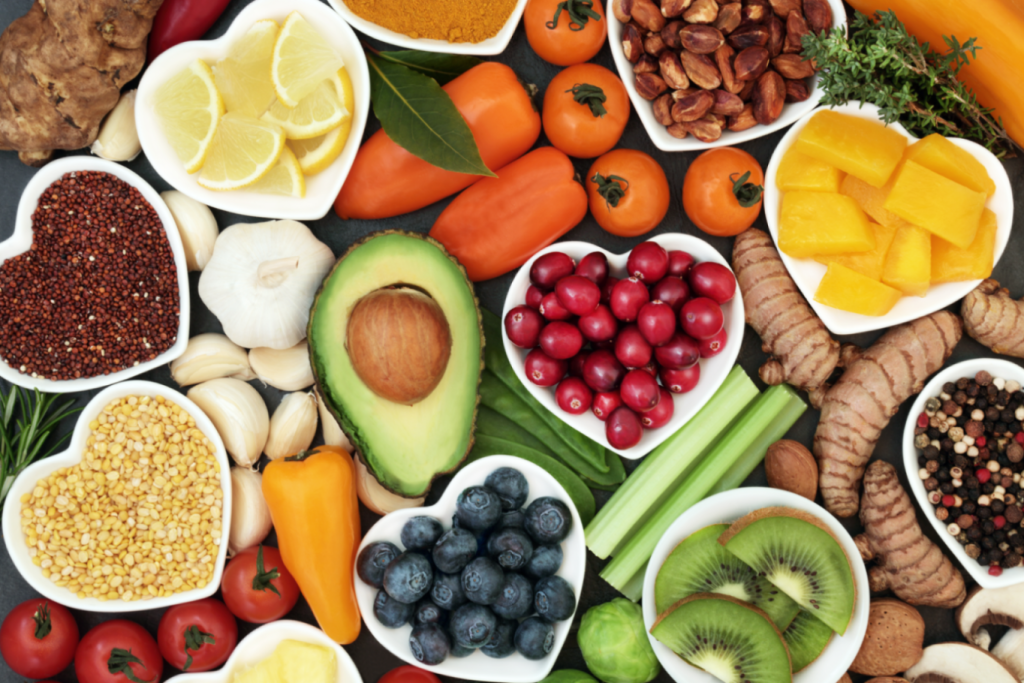
The first aspect of sustainable nutrition is getting the right food and nutrients to all people.
Programs targeting areas where a large proportion of people are undernourished, there is more of an emphasize on delivering calories, protein, and essential vitamins and minerals to prevent disease (e.g. vitamin A, iron).
The World Health Organisation calls on governments and businesses to actively produce food products that are healthier and more nutritious in order to reduce the risk of Non-Communicable Diseases, malnutrition and obesity.
These recommendations include diet changes to reduce the risk of these diseases, such as:
-
- a 30% reduction in the consumption of salt.
- An increase in the availability, affordability and consumption of fruit and vegetables
- A reduction of saturated fats in food, replacing them with unsaturated fats
- Reducing the overall content of free and added sugars in food and non-alcoholic beverages
- And limiting calorie intake
Sustainable Nutrition also includes food safety and increasing nutrients that are beneficial for health (fiber, protein, vitamins, minerals, clinically proven ingredients etc).
|
Get KHNI articles delivered to your inbox
|
Examples:
Calorie reduction
In overnourished groups, reducing calories of food and beverages can help improve the food environment to make it less likely to contribute to overweight and obesity.
Low-Calorie Beverages – Overcoming Challenges Using Sensory Science
Calorie Reduction: Formulating for Sensory Success
 Sodium reduction
Sodium reduction
Due to its link to heart disease and stroke, excess sodium intake is gaining more attention each year.
Salt and Health – What is Being Done Globally to Reduce Salt Intake?
WHO’s New Global Sodium Reduction Benchmarks Bring Challenges and Opportunities
Sugar reduction
Added sugar is a contributor to excess weight gain and a target of initiatives and regulations in many countries.
The Environmental Impact of Sugar Reduction
Sustainable Nutrition: Tackling Taste Challenges
Quality protein
Protein is especially important for growing children, active agers, people trying to lose weight, and highly active individuals. It can be hard for some of these groups to consume enough high quality protein at the right times throughout the day.
Active Ageing – Why is Protein So Important?
Nutritional Benefits of Plant Proteins Taking Root with Consumers

Fruits, vegetables, and whole grains
These food groups are some of the healthiest foods people can consume, but few meet their daily recommendations globally.
Nutrient Density and the “Quality Calorie Concept”
Food safety
Healthy food must be safe food, so this aspect of health and nutrition is paramount to all endeavors in sustainable nutrition. It can be a difficult challenge in a food system that emphasizes long travel times and shelf life as well as a focus on ingredients perceived as natural.
Reducing Food Waste: Optimising Safety and Sustainability
Fermented Ingredients for Natural Preservation
Proactive nutrition
Benefits that target specific health needs like immune health, digestive health, active ageing, etc. are becoming a cornerstone of the food and beverage landscape.
Innovating for Women’s Health Webinar – June 2023 – KHNI
Exploring the Science of Mood and Food (KHNI Q Science Short)
Nutrition and the Brain – Summarizing the Science on Cognition and Memory
Nutrition and Immunity – Science At-A-Glance
Environmental
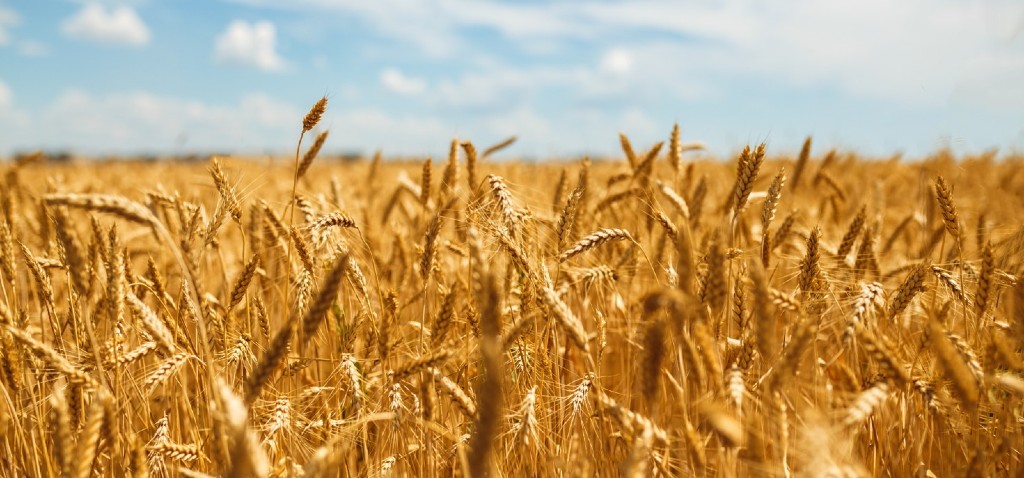
Food systems account for up to 35% of global GHG emissions, occupy ~40 percent of Earth’s land area, and is the largest driver of biodiversity loss (FAO WHO report on sustainable diets).
The environmental impact of food systems include multiple indicators such as green house gas emissions, water and land usage as well as biodiversity and pollution. A products environmental impact is measured through Life Cycle Assessment is (LCA). LCA covers all stages of a products journey.
What is a Life Cycle Assessment (LCA)? – KHNI
Environmental factors in food systems:
Climate Change – Climate Change refers to a long-term shift in temperatures and weather patterns over a long period of time. This is primarily caused by the emission of Green-house gases, such as carbon emitted when using energy.
Resource use (water, energy, land) – Food production is one of the biggest users of resources, and is accountable for 31% of all GhG emissions, 85% of all freshwater use and 38% of land use globally)
Pollution – The food industry is a key cause of many forms of pollution, from land and water pollution due to agricultural chemical run-off, to food waste and GhG emissions.
Deforestation – Agriculture production is a key cause of deforestation, as people clear more land to respond to the rising demand in food products and in animal feed.
Biodiversity – Biodiversity refers to the quantity and variety of plant and animal species. Due to loss of habitat, pollution, climate change and industrial intensification, biodiversity is currently decreasing.
Animal welfare – Animal welfare refers to the emotional and physical wellbeing of animals. The food industry is accountable for upholding animal welfare along its supply chains.
Packaging Waste – Packaging, especially single-use, is a key source of waste and resource use globally. Due to its useful function, the food industry is a key driver of single-use packaging waste.
Initiatives to improve the sustainability impact of food systems that are tied to health and nutrition include:
Food waste
The solutions to food waste are varied and can depend on where in the food system the waste or loss is happening. Reducing waste at production plants, reusing waste when appropriate, or recycling/upcycling waste are some of the targets you might find in different sustainability strategies.
Where does food waste come from and how do we reduce it?
Food waste, upcycling, and circular economy – KHNI
Reducing Food Waste: Optimising Safety and Sustainability
The Unique Considerations for Food Safety & Shelf Life in Plant-Based Meat Alternatives
‘Upcycling’ Promises to Turn Food Waste Into Your Next Meal
Sustainable protein
There is a global focus on more sustainable protein sources due to the high land use, water use, and GHG production of animal farming. This is primarily seen as a shift toward more plant-based protein sources like legumes and pulses. However, animals have an important role to play in sustainable food systems because they can occupy unfarmable land and act as recyclers of food waste streams. Other emerging areas of consideration include insect protein or cellular agriculture and precision fermentation.
Fermentation has the ability to produce many food types that we obtain typically from a farming based system today in a healthier and more sustainable way
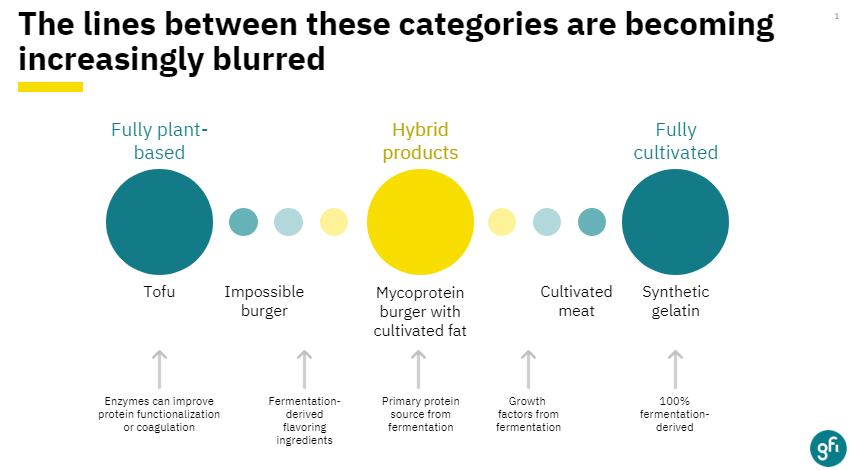
Innovation in alternative proteins is progressing quickly and lines will blur as these different technologies advance. Source: Good Food Institute
The Journey of Plant-based Innovation; Future Opportunities & Challenges
Fermentation: Will the Past Power the Future?
Plant-based Protein Future: Myths and Realities
Flavour Masking Challenges in Plant-Based Meat Alternatives
Formulating Plant-Based Foods – Nutrition Challenges and Opportunities
The Next Sustainable Ingredient – Insects that Convert Food Waste Into Protein?
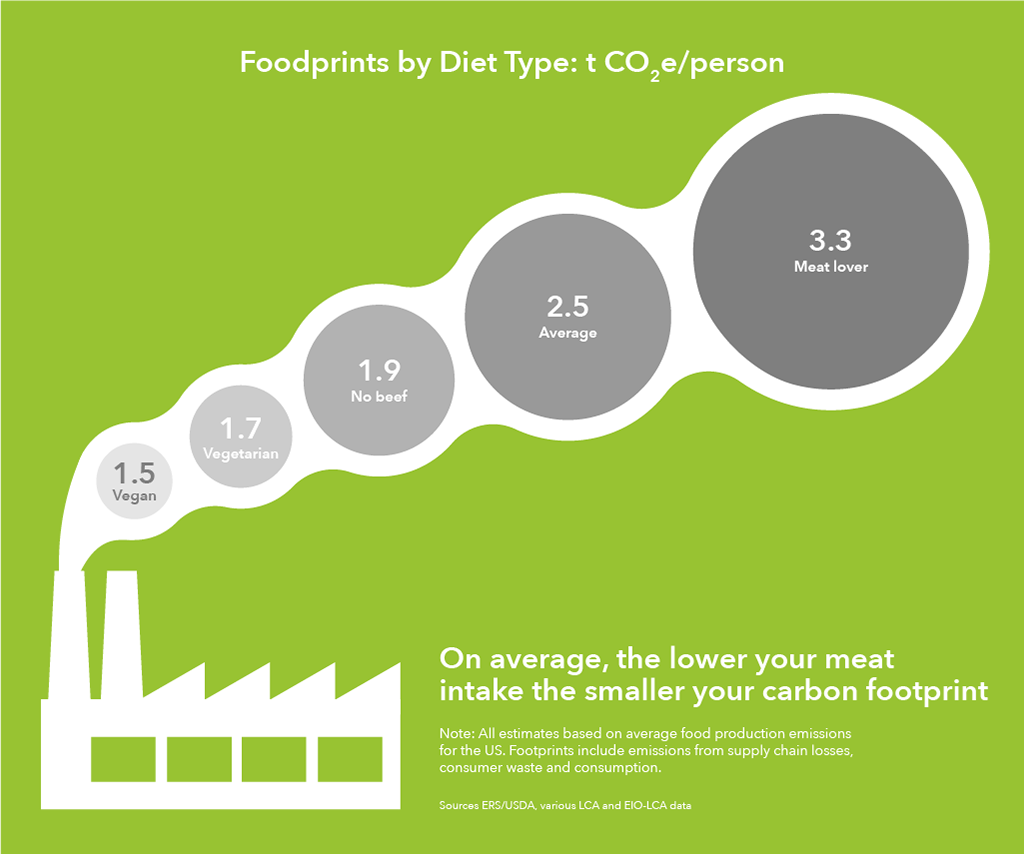
Economic
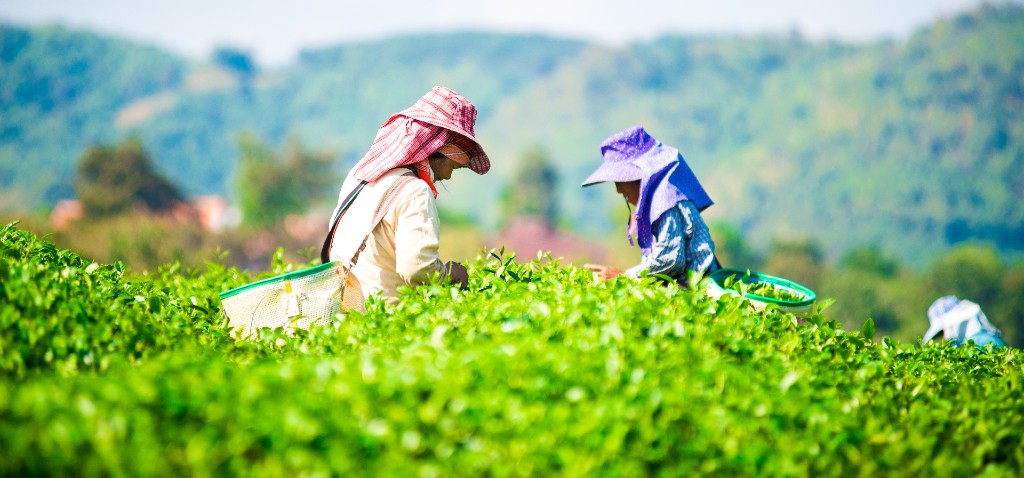
The economic impacts of Sustainable Nutrition and Sustainable Healthy Diets could be the most wide-reaching because they can be felt by all, to some degree.
Economic factors in food systems:
-
- Food waste – 30% of food is wasted globally. This represents a huge loss of economic value, wasted resources and societal loss due to the number of people who struggle to have sufficient and adequate food intake.
- Social impact – Even nowadays, there are many who go hungry, whether in developed or developing countries. Food businesses have the opportunity to have a positive social impact, for example providing food banks or soup kitchens for the homeless, or creating affordable nutritious products.
- Fair trade – Food globally is produced by farmers, some crops relying on a significant amount of manual labour. Each supply chain has an opportunity to pay workers fairly.
- Human Rights – Protecting workers’ and farmers’ labour rights is essential. There are instances of modern slavery or the illegitimate use of migrant labour in certain value chains that needs to be eradicated.
For those experiencing malnutrition, the economic pressure facing them may be that they cannot afford safe, healthy food and are subsequently forced into either food deprivation or are only able to afford cheaper, less nutritious foods. According to research conducted by the FAO and WHO, “More than 820 million people go to bed hungry every night. In 2018, 1.3 billion people experienced food insecurity at moderate levels, meaning they did not have regular access to nutritious and sufficient food.” (FAO Sustainable Healthy Diet Guiding Principles).
In 2020, the FAO reported that it is difficult for many countries to afford a healthy diet.
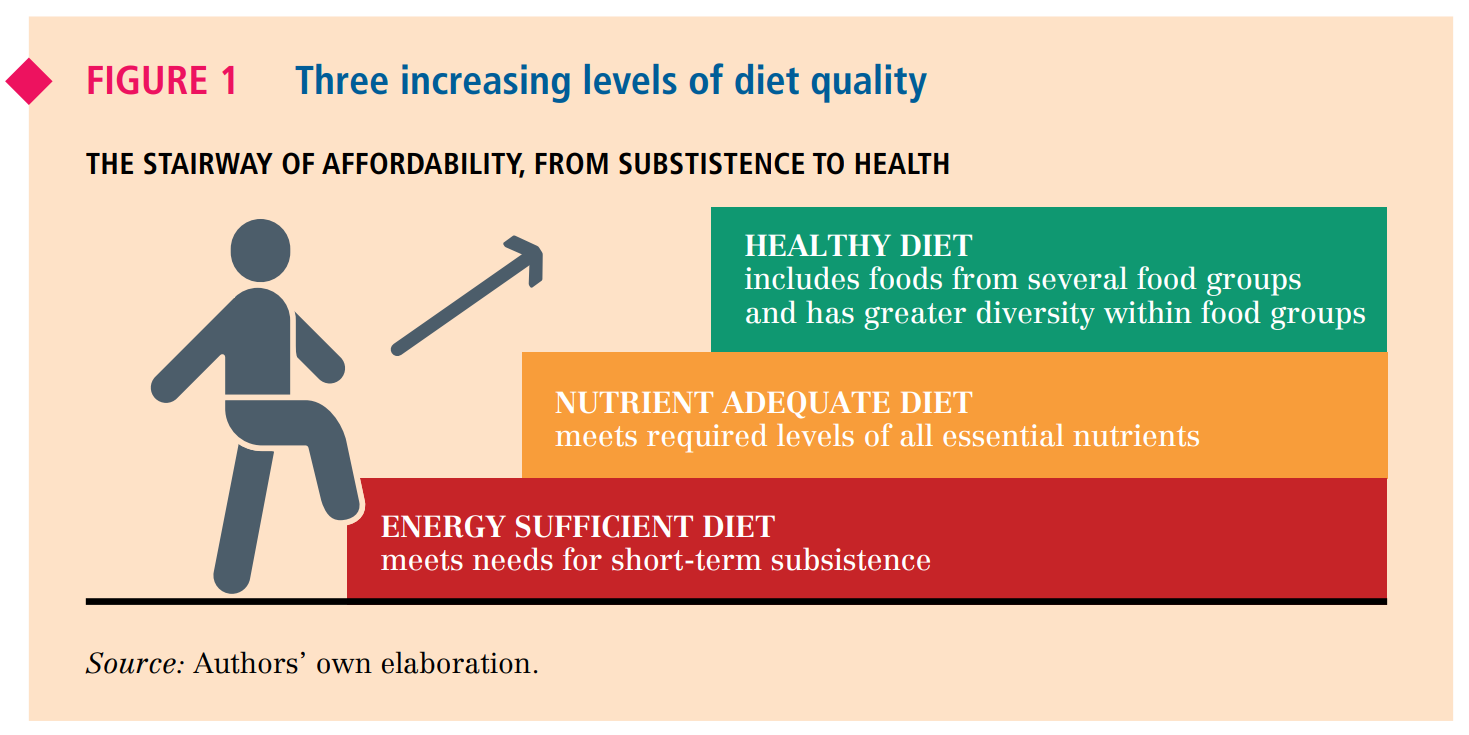 Source: Cost and affordability of healthy diets across and within countries (fao.org)
Source: Cost and affordability of healthy diets across and within countries (fao.org)
According to the FAO Report, it estimated that 3 billion people globally cannot afford the least-cost form of healthy diets. Moreover, 1.5 billion people cannot afford a nutrient adequate diet. The majority live in Southern Asia and sub-Saharan Africa. Micronutrient-rich non-staples (fruits and vegetables, dairy, and protein-rich foods) are the highest-cost food groups per day globally.
One example of this is the concept of food deserts, which are regions of a country in which individuals do not have the option of purchasing nutritious food due to limited income and/or means of transportation. If the closest supermarket that sells fresh produce is 30 km away from where someone lives, but they do not have a car or means of realistically reaching that supermarket, then that food is not available to them. In these situations, families will often end up buying groceries from a local gas station or other market with limited supply of healthy foods. These regions are common in developed countries where food is abundant for most of the population.
“Malnutrition is costly to the health of individuals, their wellbeing and productivity.”, according to Sustainable Healthy Diets Guiding Principles published by the FAO. Achieving a world of Sustainable Nutrition requires social, cultural, environmental, and economic factors to be considered as society works to provide nutritious, reliable, and safe food sources globally.
Socio-cultural

Another layer to consider when forming a system that supports sustainable nutrition is diets that are appropriate for different socio-cultural beliefs and backgrounds. Just as there are numerous diverse cultures around the globe, so too are there diverse cultural elements to nutrition.
“Sustainable diets need to be socio-culturally acceptable and economically accessible for all.” (FAO Sustainable Healthy Diet Guiding Principles)
A nutritious diet in one part of the world may not be appropriate for another. For example, meat is rich in many essential minerals like iron or zinc. Despite some cultures lacking these nutrients in their diet, meat may not be acceptable to their social or religious beliefs. As a result, finding culturally appropriate sources of those nutrients is essential.
It is important that recommendations don’t stretch people too much so as to seem impossible, such as recommending a fully-plant based diet in traditionally meat-heavy countries.
Customs such as how the food is produced and prepared, and who eats the food first are important to understand in order to respect what each culture eats and how they eat it. For example, Halal food is any food product prepared according to the Quran. Examples of halal foods include fruit, veg, fish and meat prepared in a specific way. This demonstrates the importance of responsible sourcing of food and clear food labelling for consumers. The Jewish Laws called Kashrut act similarly as halal and kosher foods are accepted under their rules.
Ensuring access to healthy, sustainable, and culturally acceptable foods are all vital elements in transforming the way our society lives and eats. Considering factors such as socio-cultural values and standards will help a sustainably nutritious food system succeed.
How can sustainable nutrition be achieved?
Progress toward a sustainable food system can be achieved two ways: either by replacing a less sustainable food with a more sustainable one, such as substituting meat with plant-based food, but also by improving sustainability practices for a certain crop. For example, soya, although a common plant-based protein, has been known to cause deforestation or to be produced through intensive farming. This is due to the high-demand for the crop for human consumption and for animal feed. Eggs are also a nutrient-dense source of protein, though can be produced very intensively. It is therefore important that each crop is also produced sustainably and with respect of animal welfare.
Thinking additively when sourcing and producing food is an approachable way to create a more sustainable food supply. In other words, try to embed multiple aspects of the dimensions of sustainable nutrition described above into your core thought process, how you choose the foods you eat (as a consumer), or how you source materials or create new products (as a food producer).
This idea of sustainable nutrition is driving a transformation in food production systems globally. Many companies are embedding this additive thinking into sustainability strategies and commitments. The United Nations Sustainable Development Goals serve as the roadmap for many of the sustainability strategies and goals companies are committing to globally.
Kerry’s sustainability commitments and Beyond the Horizon strategy can be viewed here
Bringing sustainable nutrition to life: A nutrient profiling case study
Science-based targets are key to achieving effective change in our food system. Having transparency to nutrient content of foods and ingredients in the context of how they do or do not contribute to sustainable nutrition across the entire supply chain is one way to help facilitate change. Nutrient profiling is a method used globally to differentiate foods that contribute positively to a healthy diet from those that can increase risk of chronic disease. There is no universally used nutrient profiling model; many different systems exist and are used for different purposes, but we are beginning to see more profiling models like the Traffic Light System or Nutri-Score used on food and beverage packages to guide consumers toward healthier choices. Although nutrient profiling is primarily used for consumer education or population-level nutrition research, it can also be used to evaluate product portfolios and their contribution to sustainable nutrition in the food and beverage industry.
Kerry is leading the way among the ingredient supplier industry by establishing a clear, science-based approach to nutrient profiling across its portfolio. By using nutrient profiling in a similar way, companies can hold themselves accountable for the nutrition of the products or ingredients they produce, set goals to improve the nutrition they provide consumers over time, make shifts to prioritize strategies that favor more nutritious products in the portfolio, and establish nutrition guardrails for future innovation. Combined with science-based targets for environmental, economic, and socio-cultural metrics, nutrient profiling can act as a cornerstone of change for driving the food system toward one that is more sustainably nutritious.
Read more about Kerry’s approach to portfolio-wide nutrient profiling.

Nutrition criteria used for profiling Kerry’s Taste & Nutrition portfolio for sustainable nutrition. Copyright Kerry Group 2021.
What are examples of a sustainable diet?
The best sustainable diet is one that improves health outcomes, reduces the environmental impact of food production and consumption, is affordable, and is culturally acceptable.
-
- Include wholegrains, legumes, nuts and an abundance and variety of fresh fruit and vegetables in your diet. If possible, consume field grown or robust foods that are less prone to spoilage, such as tubers
- Eat moderate amounts of eggs, dairy or dairy alternatives.
- Your diet can include, if any, moderate amounts of poultry and small amounts of red meat. When eating meat, all animal parts should be consumed.
- Eat small quantities of fish and aquatic products sourced from sustainable fisheries
- Make sure to eat healthy fats, such as unsalted seeds and nuts as well as vegetable oils with a good omega 3:6 ratio
- For newborns and babies, it is recommended to exclusively breastfeed till 6 months, with continued breastfeeding until two years and beyond, combined with appropriate complementary feeding
- Safe and clean drinking water should be the fluid of choice, preferably from tap water
When putting together the health & nutrition advice of National Dietary Guidelines with a view of sustainable consumption and production, we get what is now being termed a Sustainable and Healthy Diet. Fortunately for us, a sustainable diet is largely a healthy one!
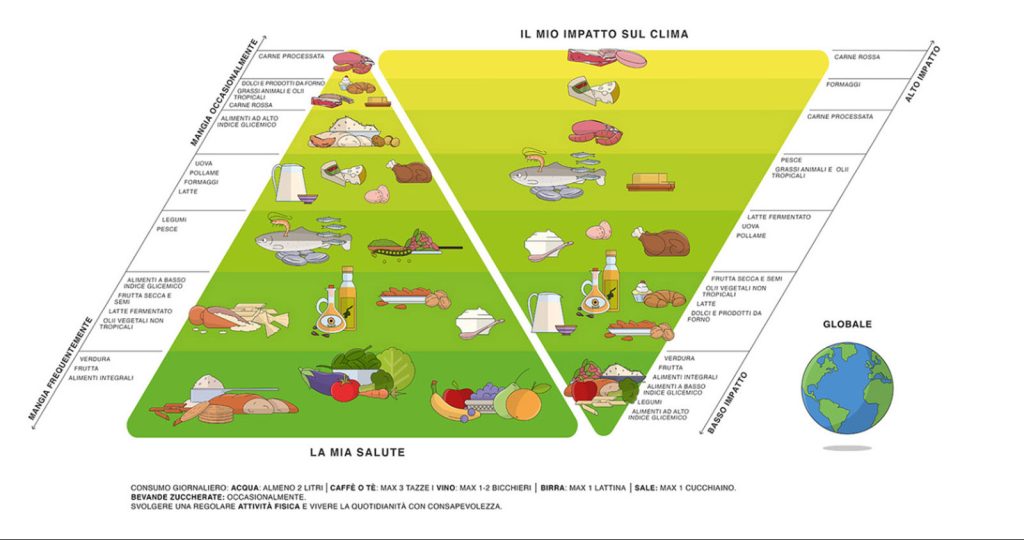
As you can see from the Double Food Pyramid, dietary recommendations are not too different from foods that have a low environmental impact. In the UK alone, following the National Dietary Guidelines would decrease national emissions by 30%.
Tips for a sustainable diet, adapted from Steenson, S., Judith L. Buttriss. Healthier and more sustainble diets: What changes are needed in high-income countries? Nutrition Bulletin, 46, 279– 309:
- Follow your regional dietary guidelines
- Eat more fruits and vegetables
- Diversify and shift the balance of protein intake towards more plant-based sources of protein
- Limit foods high in fat, salt, or sugar
- Choose sustainable sources of fish and seafood
- Waste less food

A recent scientific review used optimisation techniques to understand which foods and diet patterns help meet nutritional recommendations while lowering environmental impact. The six recommendations above come from the findings of this study. For more details on how specific foods impacted nutrition and sustainability measures, refer to the full study linked above.
The study authors searched the scientific literature and identified 29 studies from high-income countries (e.g. the UK) published within the last 10 years that met our search criteria. These studies looked at the impact of different diets as a whole, instead of focusing on changes to single foods in isolation (e.g. meat or dairy products).
All studies included in the review estimated the environmental impact of different diets using at least one indicator, such as the associated GHGE, or land or water use.
The main finding of the study was that diets that were more plant-rich and closely aligned with government healthy eating guidelines (the Eatwell Guide in the UK) were nutritionally adequate while reducing greenhouse gas emissions by 30% and water use by 4% compared to current UK diets. Many countries have their own dietary guidelines emphasizing similar eating patterns to the Eatwell Guide (more plant-based foods, fruits, vegetables, whole grains, low-fat dairy, etc). The most appropriate diet would be the one tailored for its respective country.
This article was originally published on 10 August 2022. It was updated 18 July 2023 to reflect new information.

